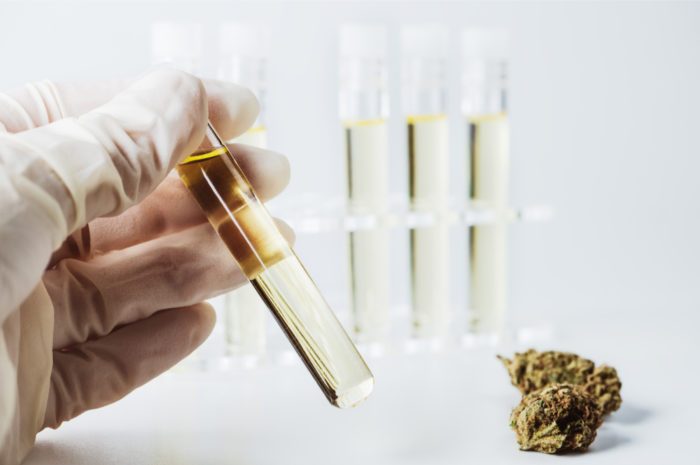This could mean more studies, better plants, and more personalized medicine.
In a first for cannabis research, a fully annotated genome for cannabis plants is now available to the public through the NCBI genome browser. What does this mean? Any researcher/scientist with a web browser can access these cannabis genome files. This will vastly reduce the resources necessary to study cannabis.
An article published in BioRxiv (Sept. 2019), discusses the implications of this important new development. The researchers described the challenges that have existed in studying cannabis. Namely the lack of a publicly available annotated genome. They wrote, “In June of 2019, we approached the National Center for Biotechnology Information (NCBI) to request they utilize publicly deposited genomes from these plants to create the first fully annotated reference for the Cannabis genome.”
And to the delight of scientists and cannabis cultivators, the NCBI accepted the request. As a result, the reference was made available to the public on September 9, 2019. This release of information will allow researchers to access information about the common genomic and proteomic data of cannabis plants. “Nearly any lab can now design specific high-quality primers for Cannabis genetics and microbial contamination work,” the study said.
The researchers went on to explain that few supercomputers or Cloud-based search engines exist that can make this kind of information available. “The release of the NCBI annotations essentially permits, for the first time, both shotgun and top-down analysis of proteomics data from Cannabis plants.”

First Things First: What is a Genome?
Every living thing — from humans to trees — has a genome. It’s basically the genetic blueprint of an organism. And in order to fully study an organism, scientists must understand its genome. Over the years, researchers have worked on mapping genomes for humans, microbes, viruses, and of course, plants.
And while the genomes of individual cannabis plants have been mapped in the past, relatively few groups have made that data available to the public. The study explained, “Even when this data may be downloaded, the evaluation of unprocessed data is often beyond the capabilities of many researchers. As most code requires access to high performance computer clusters for analysis.”
That’s where this newly released reference comes in. It allows scientists with fewer resources at their disposal to analyze genomic information that would otherwise remain unattainable. In fact, through NCBI’s database, researchers can conduct a full search of the available data in less than ten hours. Where previously it might have taken them well over one hundred hours of searching.
How Will This Change Cannabis Genome Research?
This kind of accessible data has the potential to offer valuable insight. Not only for research, but for the cannabis industry and policy makers. It can help the scientific community better understand the genetics of various cannabis plants for breeding. This can result in better production yields, increased strain (chemovar) purity and identification, and safety from harmful pathogens.
The data can also speed up the breeding process. Cultivators will now have the information they need to grow genetically superior plants. This potentially opens the door faster-maturing plants that could provide more reliable, fixed outcomes. Like those cannabis plants intended to treat specific medical issues, such as Multiple Sclerosis or epilepsy.
And as Rolling Stone reported in 2018, “Beyond just learning which plants most benefit growers and their customers, creating a comprehensive cannabis genome advances our understanding of the medicinal properties of cannabis itself.”
This kind of information could also lead to more government funding of cannabis research. More funding means will more studies being published about the effects of various chemovars. A better understanding of these plants will help lawmakers create better policy when it comes to cannabis.

Genomic Data and the Consumer’s Experience
The ability of this data to possibly improve crop cultivation, chemovar identification and medicinal research means a better experience for the average cannabis consumer. A research article published in Proceeding National Academy of Sciences (2019) described some of these consumer benefits. New varieties of chemovars could result from this resource, as well as a better understanding of how they affect the human body.
We know that consumers want to know exactly how much THC or CBD is present in a specific chemovar, as well as any other cannabinoids that might cause a modulating effect, like cannabichromene (CBC) — which is currently being researched for its anti-inflammatory properties.
Now that a fully annotated genome is available, researchers can hone in on the right balance of cannabinoids to treat various medical conditions. They can then genetically engineer chemovars that can be depended on to achieve accurate and intended results. That way, when consumers purchase a cannabis product, they will know exactly what they’re getting, along with how it could affect them physically.
Essentially, this resource will improve what we know about cannabis both scientifically and agriculturally. This big step forward in cannabis genome research is exciting and could facilitate the evolution of cannabis as a medicine.





